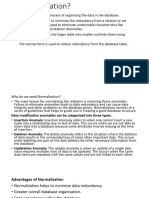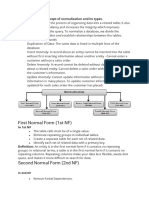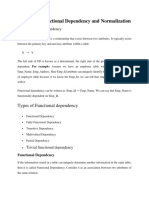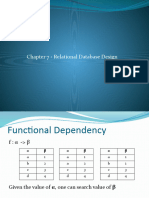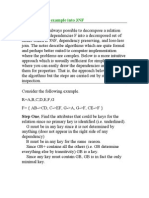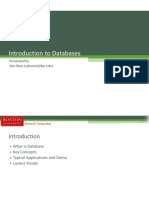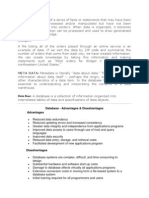0% found this document useful (0 votes)
10 views6 pagesNormalization
The document discusses the concepts of normalization and functional dependency in relational databases, emphasizing the importance of keys for data integrity and relationships. It outlines the normalization process, detailing the characteristics of well-formed relations and the stages of normal forms, including First, Second, and Third Normal Forms, along with Boyce-Codd Normal Form. Each stage aims to eliminate redundancy and ensure that non-prime attributes are dependent on primary keys, thus maintaining data consistency and integrity.
Uploaded by
dharikadevi6Copyright
© © All Rights Reserved
We take content rights seriously. If you suspect this is your content, claim it here.
Available Formats
Download as DOCX, PDF, TXT or read online on Scribd
0% found this document useful (0 votes)
10 views6 pagesNormalization
The document discusses the concepts of normalization and functional dependency in relational databases, emphasizing the importance of keys for data integrity and relationships. It outlines the normalization process, detailing the characteristics of well-formed relations and the stages of normal forms, including First, Second, and Third Normal Forms, along with Boyce-Codd Normal Form. Each stage aims to eliminate redundancy and ensure that non-prime attributes are dependent on primary keys, thus maintaining data consistency and integrity.
Uploaded by
dharikadevi6Copyright
© © All Rights Reserved
We take content rights seriously. If you suspect this is your content, claim it here.
Available Formats
Download as DOCX, PDF, TXT or read online on Scribd
/ 6















